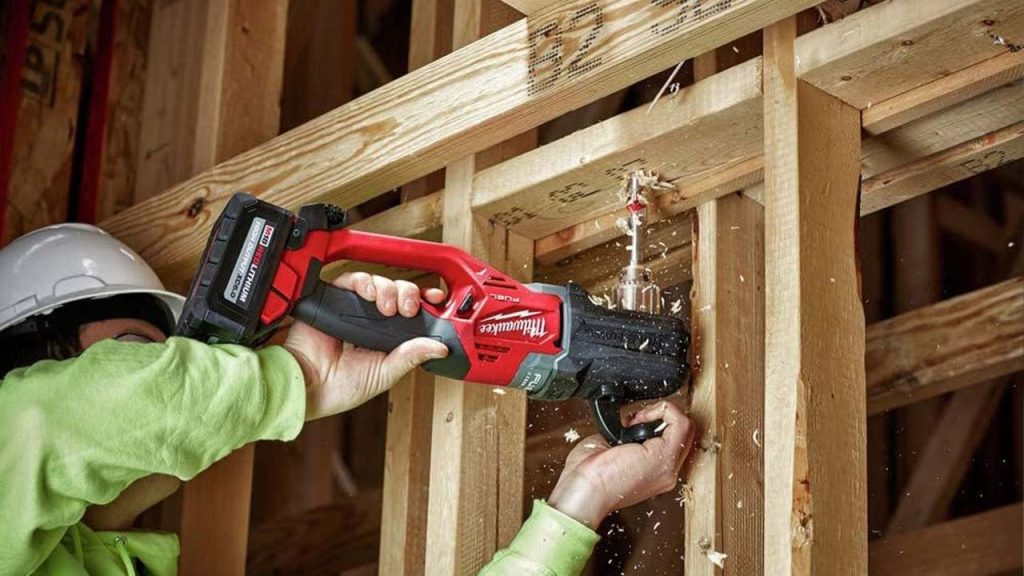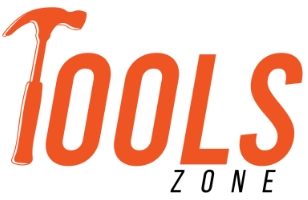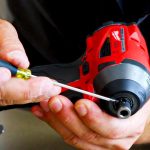As a handyman who does both electrical and plumbing work, having the right power tools can make my job much easier.
When it comes to drilling holes through wood and other materials, nothing beats using a high-powered right-angle drill. I’ve relied on bulky corded models for years, but Milwaukee’s drills have been game-changers.
These cordless tools provide the strength and torque I need, without the hassle of a power cord getting in the way. However, Milwaukee offers two different models – the Hole Hawg and Super Hawg. Both kits are packed with features but have important differences.
In this article, I’ll share my hands-on experience to explain the key distinctions between the Milwaukee M18 Hole Hawg and Super Hawg. My goal is to provide a detailed comparison to help you decide which is the best choice for your drilling needs as a fellow handyman.
My Recommendations at a Glance
When choosing between Milwaukee’s M18 Hole Hawg or Super Hawg, which model is the best pick? Here are my usage recommendations based on my professional experience:
For Electricians:
If you primarily drill smaller diameter holes through framing – for example running wiring or setting electrical boxes – I suggest going with the Milwaukee M18 Hole Hawg.
The lighter weight, shorter length, and 1200 RPM speed produce excellent control for repetitively boring holes up to 1-1/4” in size. It has plenty of strength for chewing through wood with nails or dense spots. And the built-in clutch is handy for times when you must drill into hardware or fasteners.
For most electrical contractors, the Hole Hawg’s size makes it easier to use in tighter spaces. And it weighs much less than the Super Hawg, reducing fatigue from extended overhead work. Unless you frequently bore holes larger than 1-1/2″, I don’t think the extra bulk and cost of the Super Hawg make sense.

For Plumbers:
If you mainly drill big diameter holes through joists and framing – like running new pipes or installing fixtures – go with the Milwaukee M18 Super Hawg.
The Super Hawg’s 2-speed transmission delivers tremendous torque at low RPMs for large self-feeding auger bits up to 4-5/8”. And you can shift into higher gear to speed up smaller hole saws or railway auger bits.
The added electronics also provide advanced torque control and kickback protection. When dealing with big powerful augers, that really helps reduce the risks.
Unless you only drill small holes, the Super Hawg’s superior power and features make it better suited for most plumbing tasks. It’s bulkier and pricier than the Hole Hawg, but you get capabilities tailored specifically to a plumber’s needs.

My Background
Before jumping into the tools themselves, let me tell you a bit about my background so you understand my perspective.
I’ve been working as a handyman and general contractor for over 15 years. In that time, I’ve gained experience in everything from basic repairs to complete home remodels.
The two most common projects I work on involve electrical and plumbing tasks. For example, wiring new circuits, installing ceiling fans, repairing outlets, running new pipes and drains, hooking up appliances like dishwashers, etc.
Having the right tools for each job has always been critical for me. I’ve wasted lots of time and effort trying to make do with underpowered or ineffective equipment. So nowadays, I only buy top-quality tools that make my work easier.
When it comes to drills, Milwaukee has become my go-to brand. Their M18 Fuel lineup hits a sweet spot between power, performance, and price. I currently own several M18 drills and impact drivers that handle everything from driving screws to boring large holes.
But for this comparison, I want to focus specifically on Milwaukee’s Hole Hawg and Super Hawg models. Both deliver the cordless convenience and brute strength I rely on for electrical and plumbing jobs. But after using them myself, I’ve learned their capabilities are quite different.
In the rest of this article, I’ll share my real-world experience to show you how to decide between the Milwaukee Hole Hawg and Super Hawg. Let’s dive in!
Key Specifications
First, I want to provide a high-level overview of each model by looking at the basic specs:
Milwaukee M18 Hole Hawg
- 18V Cordless right-angle drill
- Weighs 7.7 lbs
- Measures 17.6” long
- 1/2″ keyed chuck
- Single-speed transmission (1200 RPM)
- Built-in clutch
- LED light
- Fuel gauge
- RedLithium battery (6.0 Ah or 9.0 Ah)
- 5-year warranty
Milwaukee Super Hawg
- 18V Cordless right-angle drill
- Weighs 14.9 lbs
- Measures 13.2” long
- 1/2″ keyless chuck
- 2-speed transmission (0-350 / 0-950 RPM)
- Electronic clutch
- Kickback control
- LED light
- Fuel gauge
- RedLithium battery (6.0 Ah or 9.0 Ah)
- 5-year warranty
Looking at these specs, you can see the tools share many features like their cordless power source, LED light, fuel gauge, RedLithium battery compatibility, and 5-year warranty.
However, there are obvious differences in their size, weight, chuck type, and transmission. I want to explore what those distinctions mean in practice since the specs only tell part of the story.
Size and Handling
One major difference between the Hole Hawg and Super Hawg is their overall size and weight. This affects how easily you can maneuver them, especially in tight spaces.
Hole Hawg Size
At just 7.7 lbs, the Hole Hawg feels remarkably light in your hands for the power it provides. It measures only 17.6” long from end to end.
For me, this compact and slim design makes a big difference when working in confined areas like crawl spaces or up on ladders. I never realized how huge and heavy my old corded Hole Hawg was until I started using Milwaukee’s cordless version!
Being able to swing the Hole Hawg into odd positions without worrying about the bulk makes drilling overhead or in corners much less tiring. The short length also allows fitting into stud bays even if there’s plumbing or ductwork in the way.
In my experience, the Hole Hawg’s smaller dimensions are a major perk for electrical tasks where you often need to drill through framing in tight spots. The lighter weight also reduces fatigue so I can get more holes drilled without taking a break.
Super Hawg Size
On the other hand, the Super Hawg is noticeably bulkier and heavier. It tips the scales at 14.9 lbs – nearly twice the heft of the Hole Hawg. And at 13.2” long, it takes up more space front to back.
For me, the Super Hawg feels more like handling my old corded Hole Hawg. The extra size and weight provide stability when boring large diameter holes. But it also makes the tool more tiring and challenging to position in confined areas.
Unless I’m drilling big open holes for running pipe, I find the Super Hawg’s larger form factor gets in the way. The shorter length means it fits between framing, but it’s trickier to swing into place up on a ladder. And the greater mass wears out my arms much quicker, even though the added weight provides better control.
Verdict
In situations where mobility and reducing fatigue matter, I strongly prefer Hole Hawg’s smaller dimensions. But for wide open jobs where hole diameter is most important, the Super Hawg’s bulk starts to pay off.

Power and Performance
Now let’s move on to the meat and potatoes – how much drilling power each model delivers. On paper, both tools utilize Milwaukee’s latest POWERSTATE brushless motors and REDLINK PLUS intelligence to provide plenty of strength. But there are some key differences that impact real-world performance.
Hole Hawg Power
The Hole Hawg uses a high-output brushless motor paired with a single-speed transmission that provides 1200 RPM. This lets you bore holes at a moderate pace but with lots of torque.
In practice, I can drill over 200 holes on a single 6.0 Ah battery charge using 7/8” auger bits or 1-1/4” hole saws in framing lumber. The Hole Hawg powers through wood with ease and has no problem chewing through nails or hitting embedded knots. For smaller diameter holes, the speed is perfect.
The 1200 RPM pace isn’t fast, but it gives you plenty of control and reduces the chance of screw or bit slippage. And I’ve found that speed is ideal for most wiring tasks or drilling piping penetrations up to about 1” in diameter.
However, the Hole Hawg starts to struggle when I move up to larger hole saws like 2” or 2-1/2” models. It has enough grunts to get the job done, but the cutting speed slows down noticeably. For big holes, I need to take care not to force the tool at that 1200 RPM pace.
Super Hawg Power
Milwaukee designed the Super Hawg for more demanding drilling. It features a POWERSTATE brushless motor paired with a 2-speed transmission. You can switch between 350 RPM or 950 RPM as needed for the material and hole size.
With the lower 350 RPM setting, the Super Hawg churns through lumber or other materials with tremendous twisting force. I can bore holes up to 5” in diameter using self-feeding auger bits at a steady, controlled rate. The extra torque tames the violent bucking you often get from large auger bits.
When drilling smaller holes, flipping up to 950 RPM really speeds things up. I can blow through dozens of 1” holes quickly without the tool slowing down. And that faster pace comes in handy when using large 2” – 3” hole saws for running pipe or conduit. It’s noticeably zippier than the Hole Hawg for big holes.
The two-speed transmission really makes the Super Hawg shine for plumbing work. I can dial in the right blend of speed and power for whatever hole size I need. And it has plenty of muscle in reserve for tough materials like stacked framing.
Verdict
For smaller holes up to 1-1/4”, the Hole Hawg’s 1200 RPM pace provides excellent control and speed. But the Super Hawg’s 2-speed gearing allows both slow strength and faster drilling when needed. So for large diameter holes, the Super Hawg delivers better performance.

Features and Capabilities
In addition to power output, both tools provide handy features that improve the drilling experience:
Shared Features
Having used both models extensively, here are some of the features I really appreciate on both the Hole Hawg and Super Hawg:
- Cordless convenience – I can’t say enough how much easier these make drilling vs corded models! No more extension cords or dangling hoses.
- Compact size – Even the Super Hawg is reasonably compact vs old 1200 RPM corded Hole Hawgs that were enormous.
- Keyless chuck – Makes bits changes quick and easy compared to keyed models.
- LED light – Brightly illuminates the work area without creating shadows.
- Fuel gauge – Lets me check the battery level at a glance to avoid sudden shutdowns.
- Belt clip – Allows keeping the tool close at hand when moving around.
- Contractor bag – Organizes everything together and offers handy storage onboard.
Unique Features
Beyond the common features above, each tool brings unique capabilities to the table:
Hole Hawg
- Built-in clutch – Provides torque control to prevent damage to fasteners or hardware.
- Compact length – Reaches into tight stud bays despite obstructions.
- Light weight – Maximizes control and reduces fatigue for overhead use.
Super Hawg
- 2-speed transmission – Optimizes power and speed for different hole sizes.
- Electronic clutch – Prevents screw and bit slippage under heavy loads.
- Kickback control – Senses sudden binds and stops the tool to avoid twistout.
- Higher power output – Handles larger diameter holes in tough materials.
Verdict
The Hole Hawg provides a handy built-in clutch and compact size perfect for electricians. But the Super Hawg adds more advanced electronics for torque control and safety. For plumbers dealing with larger holes, these features are highly beneficial.
Bottom Line
Having used both the Milwaukee M18 Hole Hawg and Super Hawg extensively for electrical and plumbing jobs, it’s clear they each have advantages in the right situations:
The Hole Hawg’s smaller dimensions provide outstanding control when drilling multiple holes less than 1-1/4” in diameter – perfect for electricians.
The Super Hawg has extra power and advanced features for boring holes larger than 1-1/4” – ideal for plumbers.
My overall verdict is to choose the Hole Hawg for wiring tasks and the Super Hawg for plumbing tasks. Think about the typical hole sizes and challenges for your line of work. Let the drilling you expect to encounter guide you toward the best Milwaukee right-angle drill for your needs.
Both kits deliver outstanding power and performance in a compact cordless package. So whether you pick the Hole Hawg or Super Hawg, you’ll enjoy a huge upgrade over old corded Hole Hawgs! Let me know if this rundown helped you decide on which model is right for you.










Leave a Comment